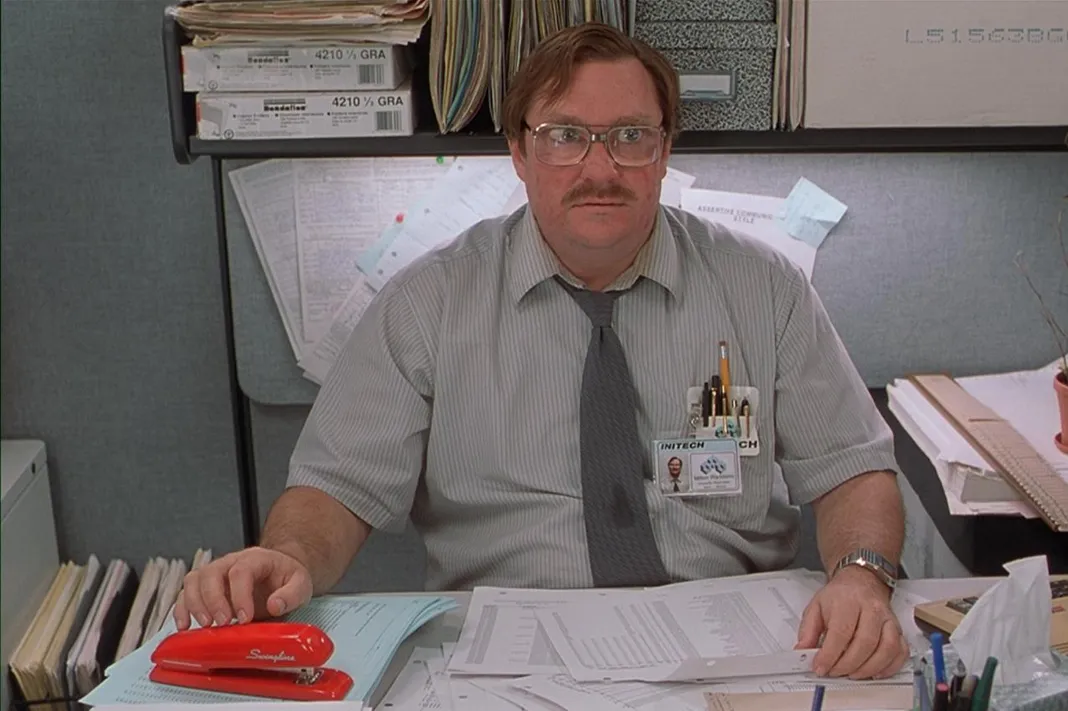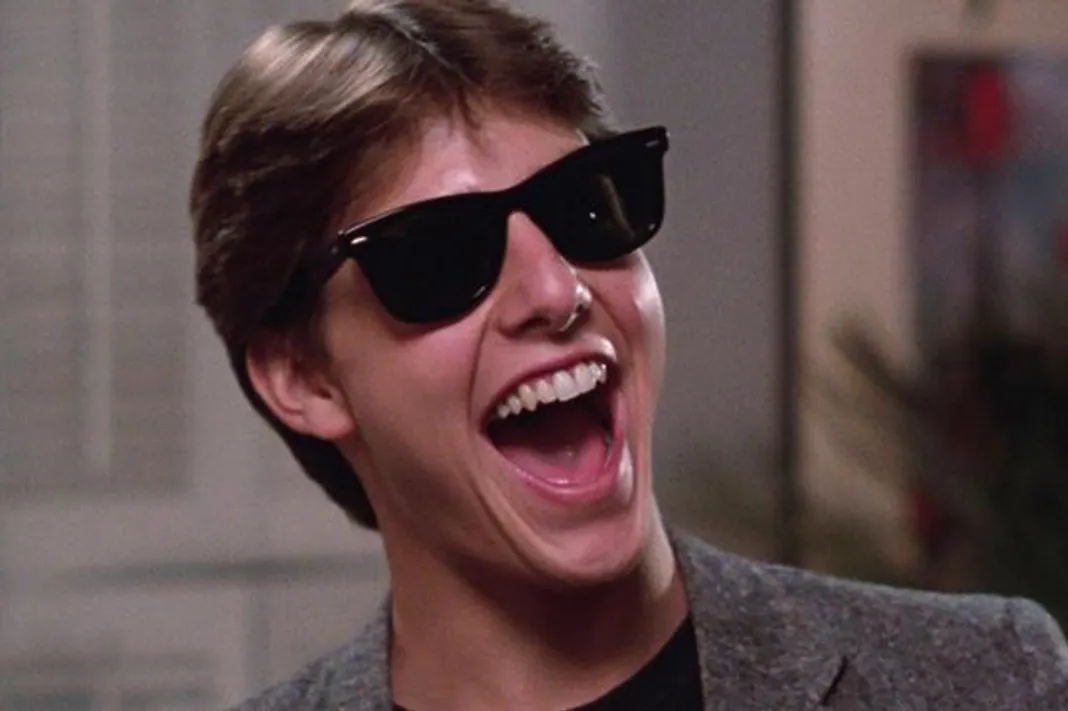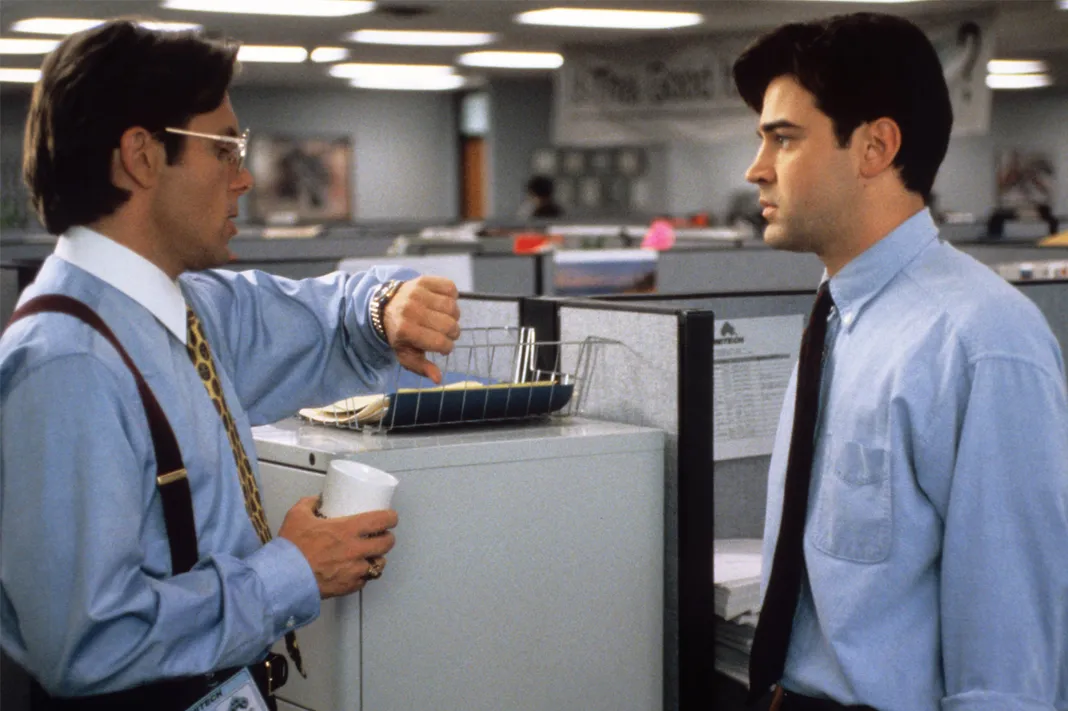Product placement isn’t a new idea. In fact Jules Vern is rumored to have sold the naming rights for companies in his 1873 novel Around the World in 80 Days. And today, some movies are basically feature length commercials, but nobody actually buys into product placement, right? Well actually…
1. Swingline (Office Space)

As far as we can tell, the moral of the story in Office Space is that if someone takes your red stapler, you should burn down their workplace. When Office Space was released in 1999, it barely made a profit, but when the film was released on VHS the following year, it became an overnight cult hit. Fans were suddenly trying to get their hands on their own red Swingline staplers. The problem? Swingline didn’t make a red stapler. According to Bill Carvell, a vice president at ACCO Brands Inc. (the parent company of Swingline), “Bright-red staplers aren’t typically marketed in bulk to big companies. Compared to black and platinum, it wouldn’t have sold.”
Swingline knew about Office Space, but didn’t think much of the movie or its marketing potential, “It was an inside thing in the industry that an office product had been used in a film, but it’s not like it was in Star Wars or something.” However due to the demand, Swingline soon introduced a red stapler, which became the company’s best selling product.
2. Reese’s Pieces (E.T. the Extra-Terrestrial)
Director Steven Spielberg originally wanted Elliot to use M&M’s to lure E.T. inside his house, but Mars turned him down. There’s no official reason why Mars passed on one of the most successful endorsement opportunities of all-time, but the legend goes that Mars executives thought the movie would bomb and wanted to keep their distance from the potential flop. Hershey, on the other hand, jumped on the opportunity. E.T. the Extra-Terrestrial became the highest grossing film of all-time and sales of Reese’s Pieces reportedly tripled just two weeks after the movie was released.
3. Ray-Ban (Risky Business)

In 1982, Ray-Ban inked a $50,000 annual contract with Unique Product Placement to put Ray-Ban sunglasses on the faces of pretty much every celebrity ever. Since the deal was struck, Ray-Ban shades have appeared in more than 60 movies and TV shows. Per year.
In 1982, the sales for Ray-Ban’s Wayfarer line sat around 18,000 pairs, but after Tom Cruise wore a pair in Risky Business, Wayfarer’s domestic sales rose to 360,000. In 1984, sales reached 720,000 (thanks to Miami Vice) and by the time Tom Cruise wore them again in 1986’s Top Gun, Wayfarer’s sales had reached 1.5 million pairs.
4. U.S. Navy (Top Gun)
Sunglasses weren’t the only thing that Top Gun promoted either. After the movie’s release, the U.S. Navy stated that the number of recruits signing up to be Naval Aviators increased by 500 percent. The Navy even set up recruiting booths outside of theaters showing the movie, which is kind of like selling Mogwai outside of theaters showing Gremlins.
Paramount Pictures later offered to place a 90-second Navy recruiting ad at the beginning of VHS copies of Top Gun, in exchange for $1 million (the offer was presumably made so Paramount executives could showcase their Dr. Evil impressions). However, an advertising agency advised the Pentagon to reject the offer, writing “Both movies are already wonderful recruiting tools for the military, particularly the Navy, and to add a recruiting commercial onto the head of what is already a two-hour recruiting commercial is redundant.”
5. Red Stripe (The Firm)

Tom Cruise is a product placement machine. By the 1990s, Tom Cruise was on the top of the celebrity endorsement world and probably thought to himself, “I can sell a bottle of piss and people would buy it.” When that opportunity didn’t present itself, Cruise settled for the next best thing and plugged Red Stripe in his movie The Firm.
The Jamaican beer is mentioned in the original John Grisham novel, but when Gene Hackman told Tom Cruise to, “grab a Red Stripe out of the fridge,” it led to unprecedented exposure for the brew. A few months after the film’s release, sales of Red Stripe rose more than 50% and Guinness Brewing Worldwide purchased the majority stake in the company for $62 million.
6. Under Armour (Any Given Sunday)

In 1999, Warner Brothers contacted Under Armour to provide the uniforms for two of its upcoming football films, Any Given Sunday and The Replacements. In Any Given Sunday, Jamie Foxx‘s character even showcases an Under Armour jockstrap (and let’s be honest, who wouldn’t want to buy something that’s touched Jamie Foxx’s junk?)
After the release of Any Given Sunday, Under Armour founder and CEO Kevin Plank purchased a related ad in ESPN The Magazine which generated nearly $750,000 in sales. Thanks to Warner Brothers, Plank was finally able to pay himself a salary, nine years after starting his company.
7. Mini-Cooper (Italian Job)
Film critic Joe Morgenstern once called the 2003 remake of The Italian Job “the best car commercial ever” and today, business analysts praise of the film as the model example of product placement and brand integration. In April 2004, BusinessWeek reported that sales of BMW’s new line of retro-style Mini Coopers increased 22 percent after audiences saw Marky Mark driving the car.


